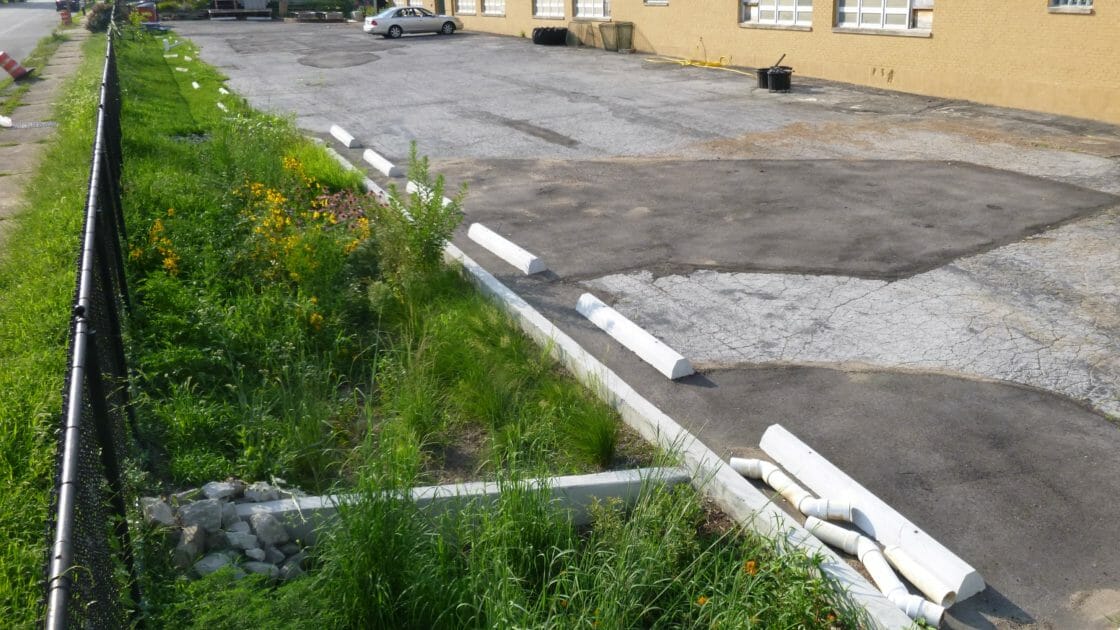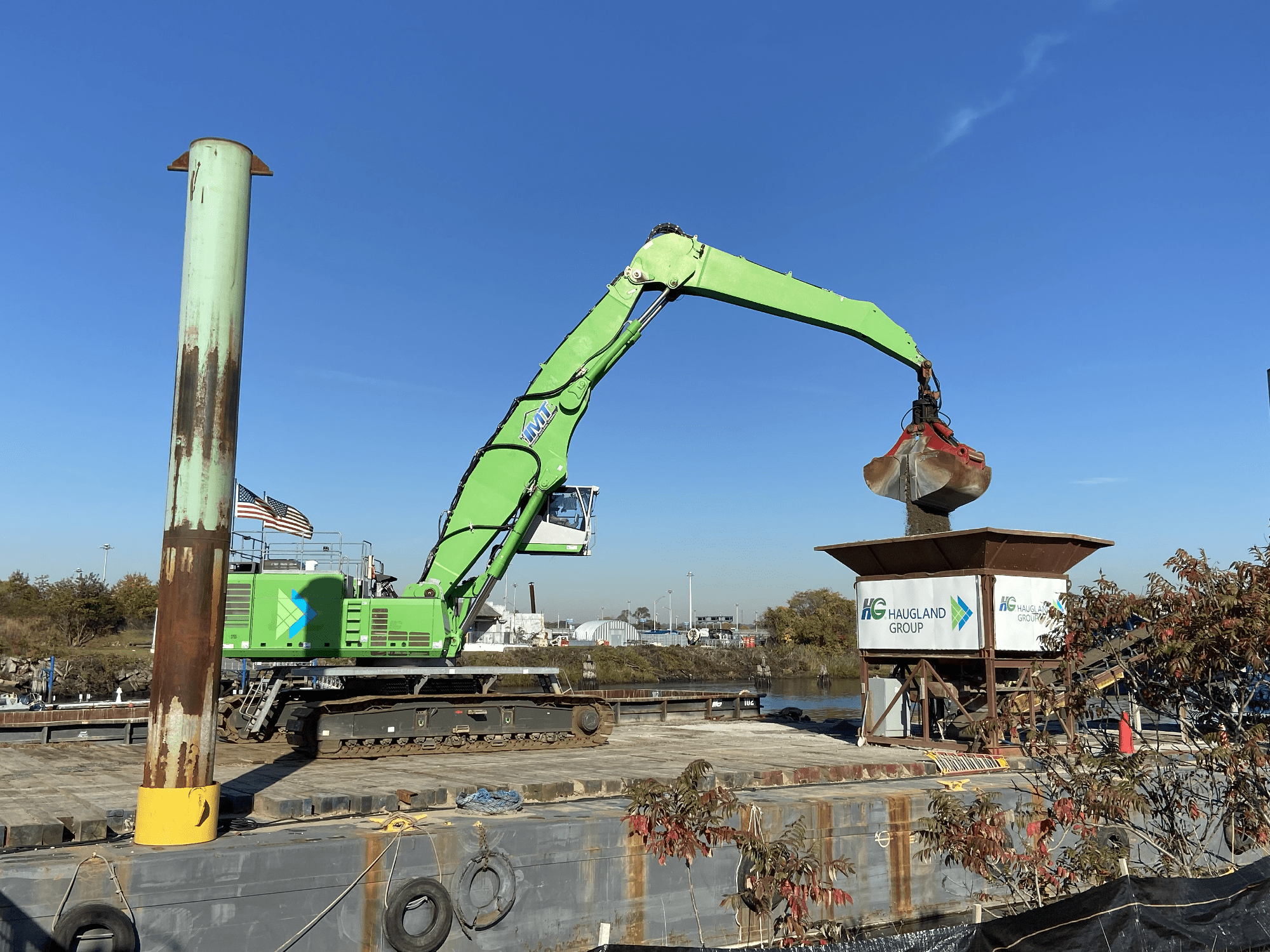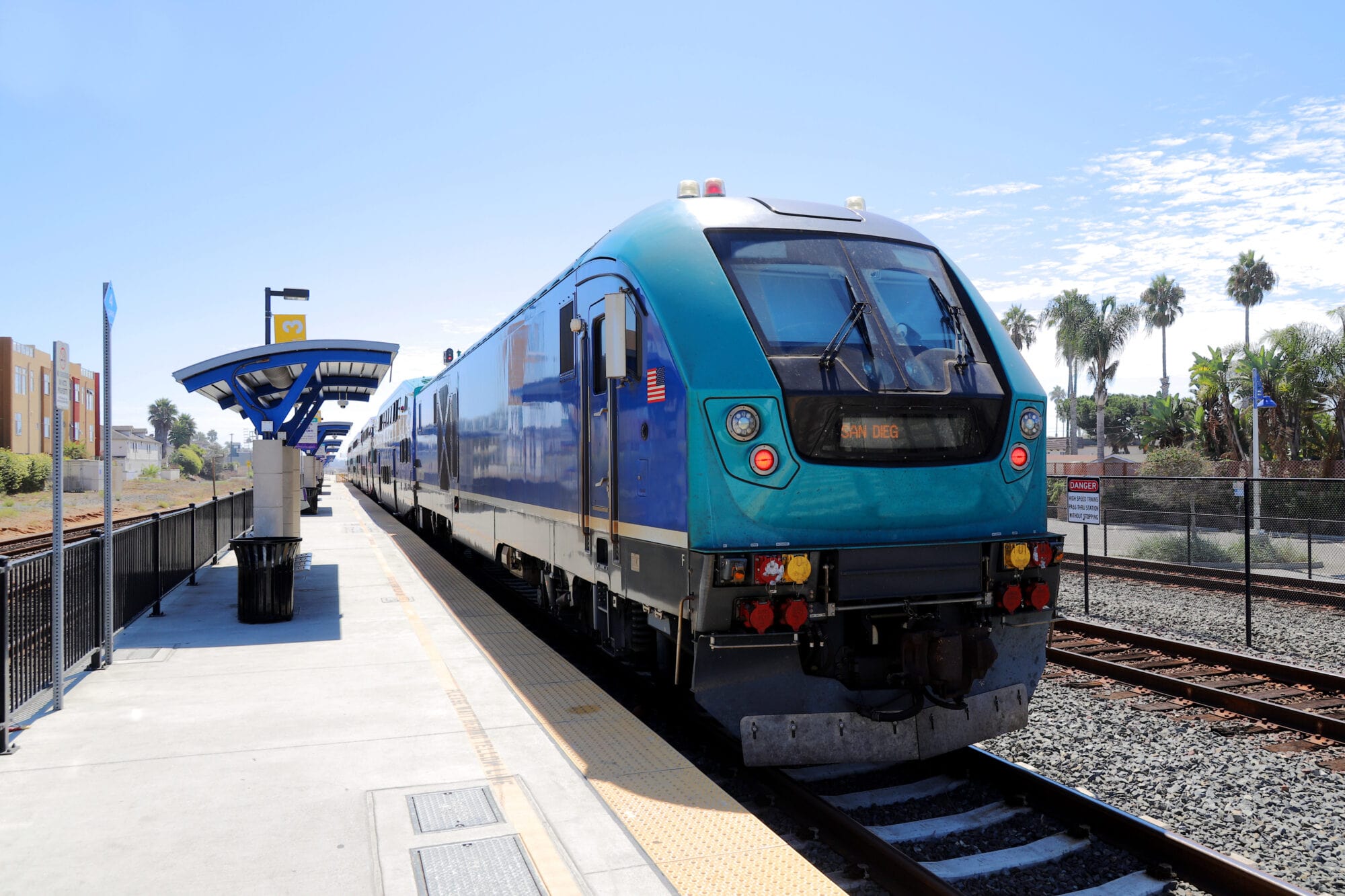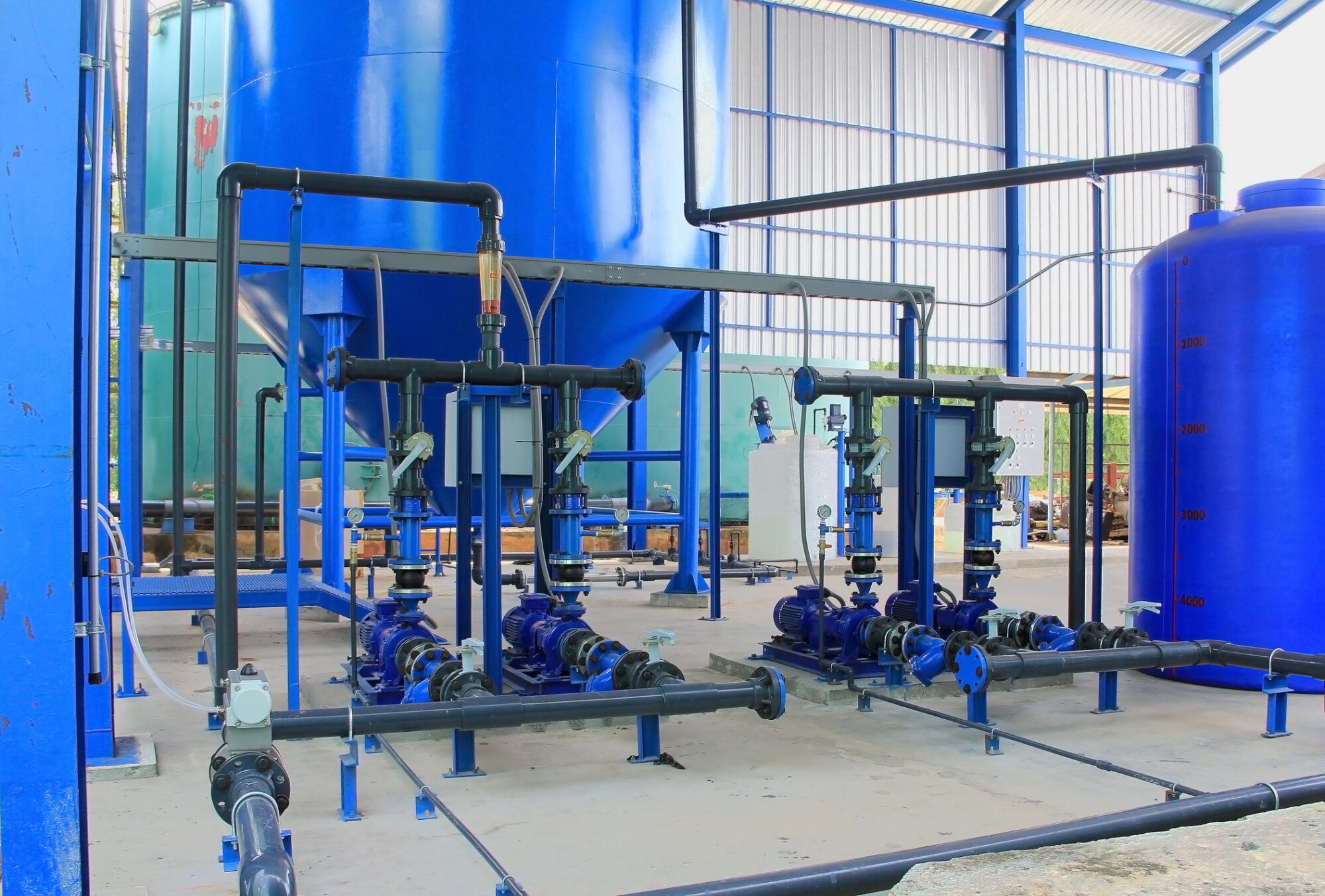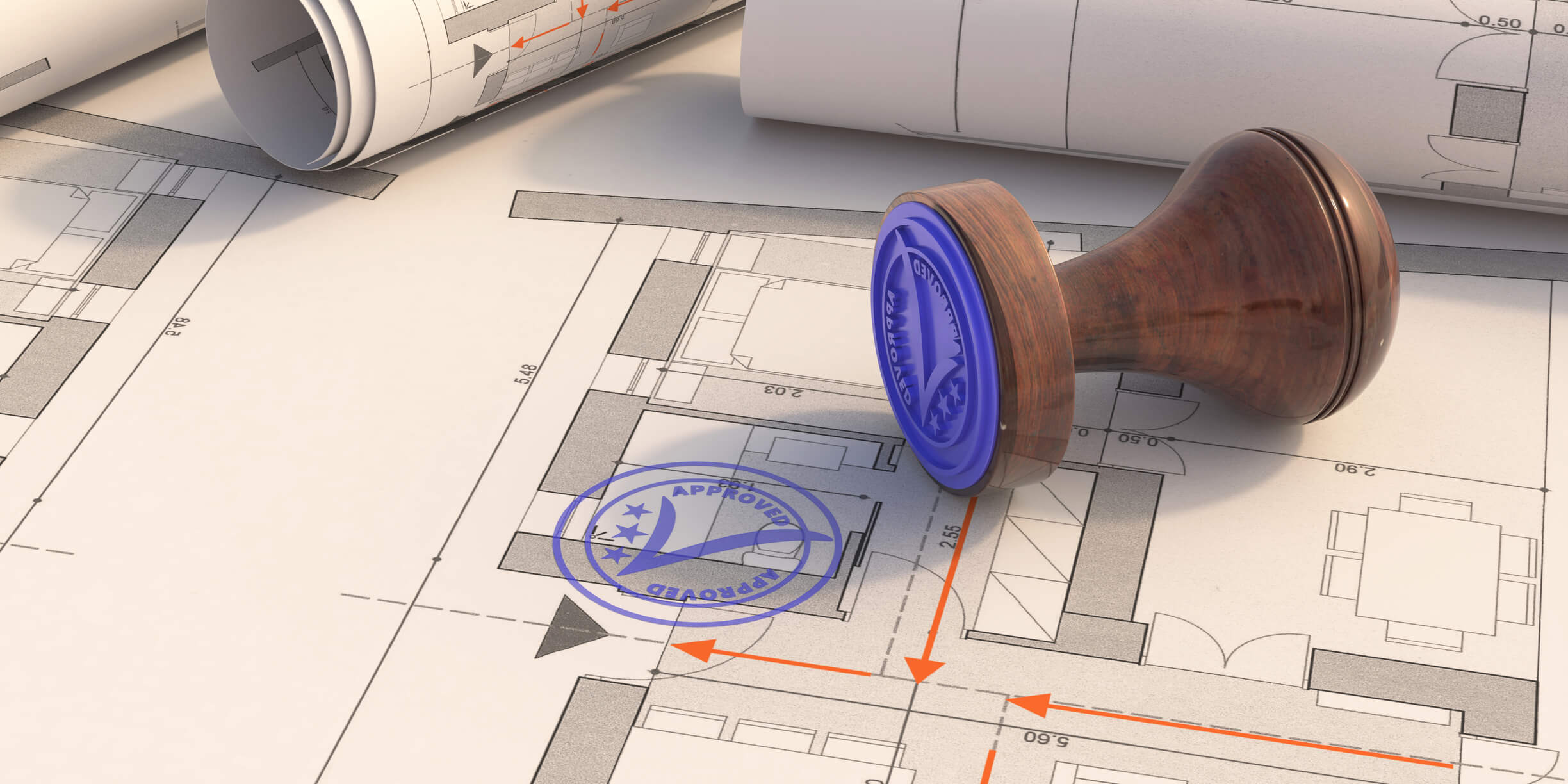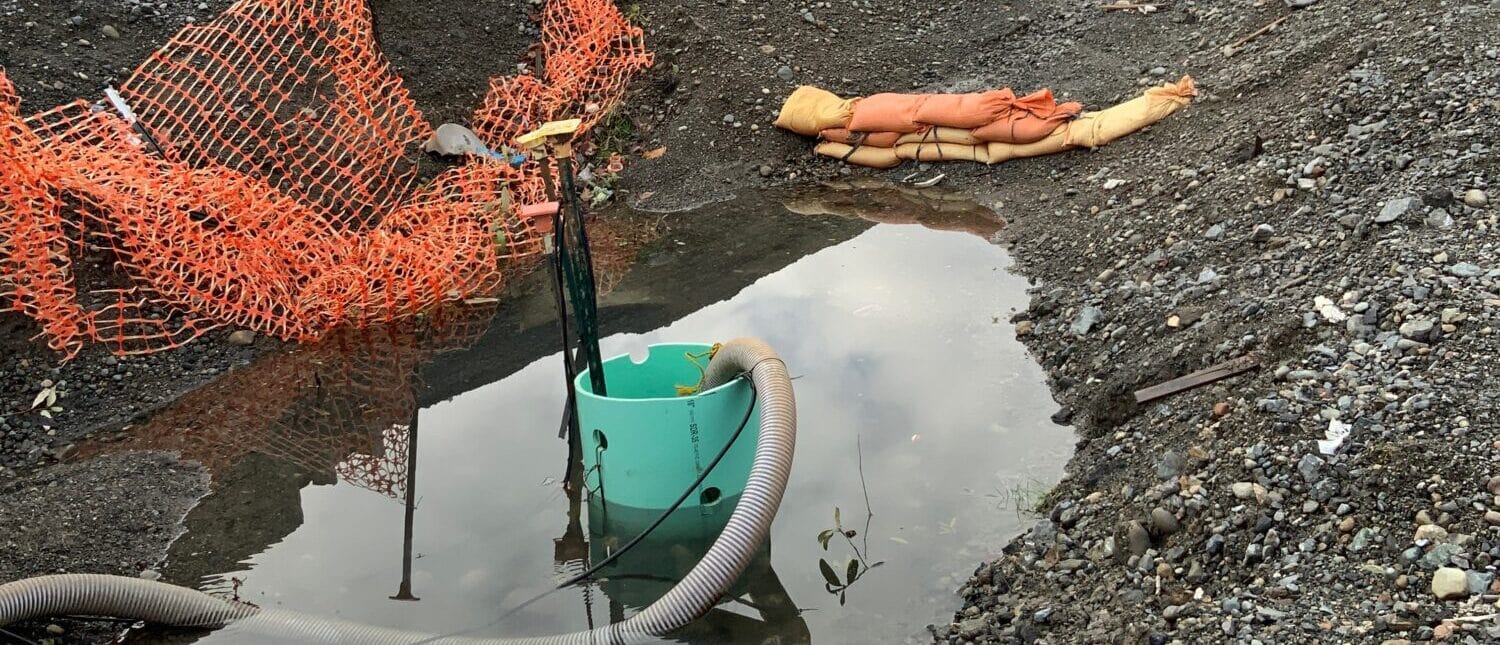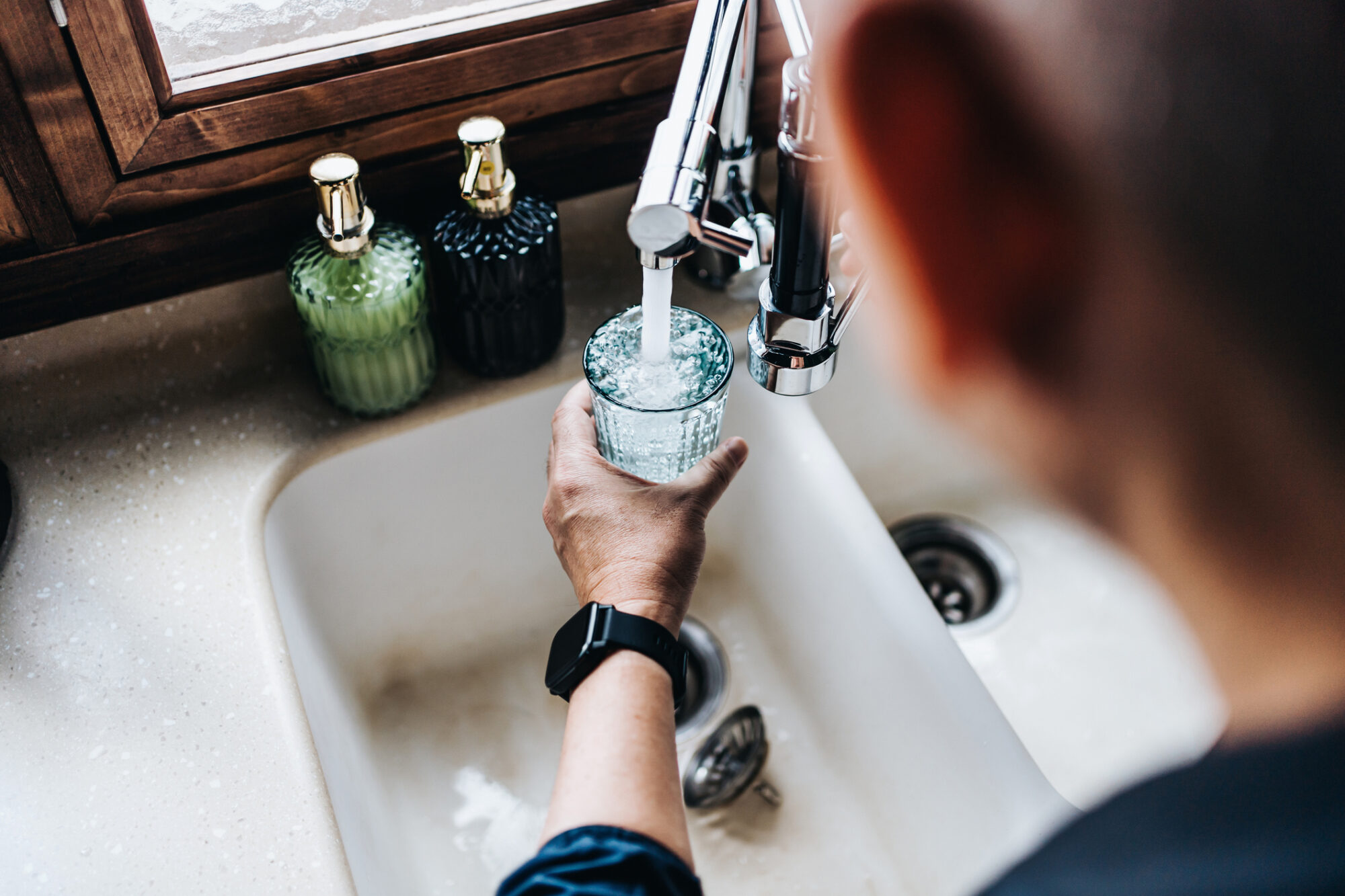St. Louis, MO
A grass swale was constructed along the downhill side of the parking lot to convey runoff to the bioretention basin. Bioretention functions by temporarily ponding stormwater up to 18 inches deep within the garden. As the water percolates through the three feet of engineered soil over 48 hours, many contaminants such as heavy metals are removed. The deep-rooted native plants maintain the soil’s hydraulic conductivity and transpire significant volumes of water. Beneath the soil, a stone reservoir retains water while it infiltrates into the native subsoils. An underdrain placed within this reservoir allows the system above to slowly drain to the sewer system.
Additionally, a 2,000 gallon below-grade cistern was installed to capture stormwater from the church’s roof for irrigating vegetable beds cultivated by families of the congregation. A custom first-flush diverter extends maintenance intervals by preventing the dirtiest of the roof runoff from entering the cistern.
The constructed BMPs manage runoff from nearly two-thirds of the property, resulting in a reduction of 254,000 gallons of runoff from entering the combined sewer system annually, thereby mitigating combined sewer overflows. The BMPs are sized to capture and treat runoff generated by the 90th percentile (1.14 inch) rainfall event.
In addition to stormwater benefits, the bioretention system and bioswale add attractive landscape and biodiversity to this previously barren property. The cistern provides free water of superior quality for the vegetable beds; and together, and provide a resource for educating neighbors and volunteer groups about the environmental impacts associated with stormwater runoff.
- Client: Bridge of Hope Community Church
- Project Location: St. Louis, MO
For more information, please contact:
- Brian Hartwig P.E.
- 314.241.2694
- BHartwig@trcsolutions.com
Related Projects
Discover the success we’ve had with helping our clients execute major projects and make a meaningful impact on their local communities.

